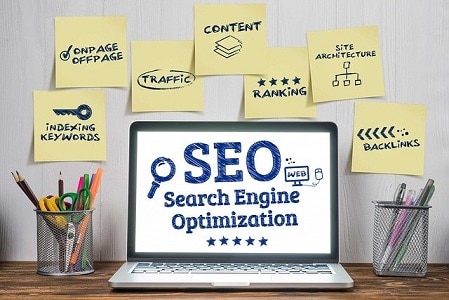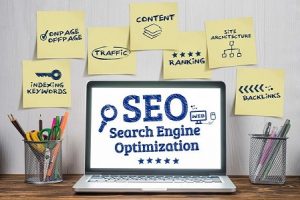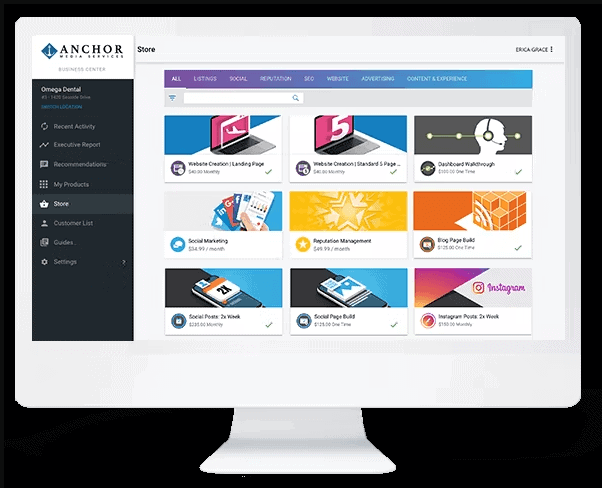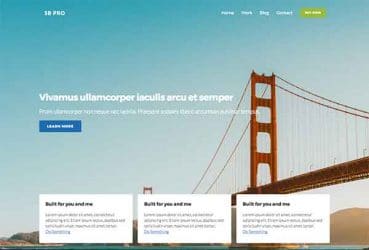
Ultimate Guide to On-Page SEO

The online presence is highly important these days for any company ranging from big corporations to small businesses. A corporate website and accounts in social media are the most common methods for taking businesses online. Creating a website is not enough though as its promotion to the top of the search results matters a lot so that more visitors will see it. For this purpose, on-page SEO and off-page SEO tactics are used together to help companies improve the visibility of their websites and increasing organic traffic.
The website rank on Google or another search engine is similar to the physical location of a business establishment. For instance, when a coffee point is located in the shopping center attended by thousands of people daily, it is likely to attract a lot of consumers. Similarly, when a website is ranked very high by Google, then more users will see and visit it. To make it possible, various SEO approaches are applied.
What is on-page SEO?
The on-page SEO is done on-site by webmasters to optimize the content and other elements of the website. It also helps search engine crawlers to discover the website and understand what is it about with the help of URL, title tag, and meta description. On-page SEO also implies technical enhancement to improve the page load speed and mobile responsiveness.
What is off-page SEO?
While on-page strategies are under the webmaster’s control, off-page SEO helps to arrange the website within the entire ecosystem of the web pace. The backlinking is put in the center of the off-page SEO. Thus, companies aim to get backlinks from blogs or start guest posting so that links from such authoritative online resources help to improve the domain authority of the website. Consequently, Google sees the website as authoritative and helpful when credible blogs are linking back to your website, click here to know more.
How to start with on-page optimization?
The principles of on-page SEO should be taken into consideration within all the stages of web page creation. The aspects of on-page optimization can be categorized into several groups.
Content-related elements
When preparing the text for the web page, keyword research should be primarily made to see the trends in the consumer search. The keyword research allows detecting how certain words or phrases perform and which of them could bring more traffic to the website. Based on the chosen keywords, the article and other content elements would be created properly.
 The first paragraph means a lot for the search engine crawlers, so it should contain as many keywords and phrases as possible. That way, Google will understand what is your page about and how it matches user search queries. While creating the first paragraph, keep in mind that the language used should look natural.
The first paragraph means a lot for the search engine crawlers, so it should contain as many keywords and phrases as possible. That way, Google will understand what is your page about and how it matches user search queries. While creating the first paragraph, keep in mind that the language used should look natural.
It is recommended that most keywords are distributed all over the text. Each of the target keywords should be used at least two times and also their synonyms should be mentioned in the article. This helps to increase the relevancy of the text as Google uses highly advanced algorithms that pay attention to the semantics rather than keyword stuffing.
The structure of the text on the page also makes a lot of sense. The paragraphs should not be too long while the graphic elements should supplement the text.
HTML elements
The on-page SEO strategy involves elaboration on such HTML elements as title tag, headers, meta description, and URL. All of them help bot crawlers to understand the structure and the topic of the web page. That is why such elements should also comprise key phrases.
When creating a title of the web page, make sure that it will also be attractive for users. Even when the title tag is understandable for crawlers, it might not be clear enough for the visitors. Thus, think of both humans and machines when crafting a creative and clickable title. The headers are also known as subtitles helping Google to understand the structure of the page better.
The meta description is another crucial HTML element for both search engines and users. Similar to the title, it presents the main idea of the particular web page or the entire website but it has more characters in disposition.
Any URL contains the website domain name and also a subdirectory describing the path to the particular page. When the name of that path correlates with the web page title, it helps to keep the consistency. Once the URL contains keywords, it makes the page more relevant for Google and contributes to a better ranking position.
Technical elements
This category of the on-page SEO strategy refers to the front-end and back-end website development and greatly influences user experience. The way visitors interact with the website is not less important than its contents. Furthermore, Google and other search engines pay attention to certain technical characteristics while ranking pages.
As smartphones tend to replace computers when it concerns surfing the web, websites need responsive design. It means that websites should display all the elements of the website correctly on computers and any mobile device or tablet. That is why webmasters need to choose the platforms that allow development for various types of gadgets.
Another important factor for Google and visitors is the website load speed. When a web page contains many images or other multimedia elements, it will usually take some time for loading. Consider squeezing those multimedia elements or removing some of them to speed up the web page load.
By Jo Smith | 18/06/2021
Categories
- Advertising and Marketing
- Business
- Business Products & Services
- Buyers' guide
- Employment
- Finance
- Franchising
- Health & Fitness
- Health Care & Medical
- International
- Internet Services
- Investment
- Professional
- Real Estate
- Sellers' guide
- Software
- Technology
- Tips and Advice
- Top Pick
- Web Resources
- White label guide
Looking for business opportunity to start your own business? Check these out!
Recommended reading







